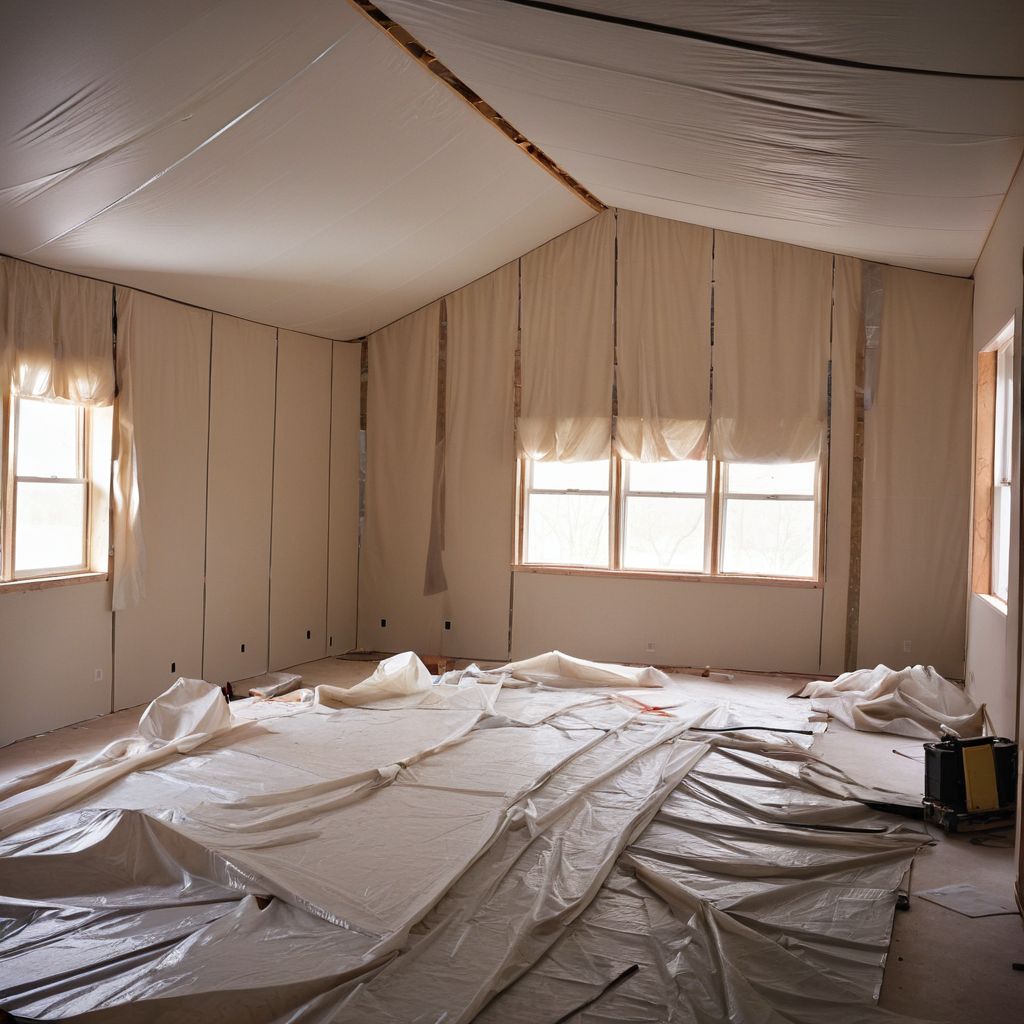
In the realm of construction, where weather conditions and environmental factors can significantly impact project timelines and outcomes, the use of sheeting and tarps plays a crucial role in safeguarding materials, equipment, and personnel. These simple yet versatile materials offer a range of benefits that contribute to the efficiency, safety, and protection of construction sites. Let’s explore why sheeting and tarps are indispensable assets on any construction job site:
1. Weather Protection:
One of the primary functions of sheeting and tarps on a construction site is to provide weather protection. They shield construction materials, tools, and equipment from rain, snow, wind, and UV rays. By covering exposed areas, such as building materials awaiting installation or sensitive equipment, sheeting and tarps prevent water damage, deterioration, and corrosion, thus preserving the integrity and longevity of materials.
2. Maintaining Cleanliness and Order:
Construction sites are inherently messy environments with dust, debris, and loose materials. Sheeting and tarps help maintain cleanliness by containing debris and preventing it from spreading beyond designated work areas. They also minimize the accumulation of dirt and debris on equipment and surfaces, facilitating a safer and more organized workspace for construction activities.
3. Containment of Hazardous Materials:
Certain construction projects involve handling hazardous materials or substances that require containment to prevent environmental contamination and ensure worker safety. Sheeting and tarps act as barriers to contain hazardous materials such as asbestos, lead paint debris, or chemical spills, thereby mitigating risks and complying with regulatory standards for environmental protection.
4. Privacy and Security:
In urban settings or high-traffic areas, construction sites often benefit from privacy and security measures. Sheeting and tarps can be used to conceal sensitive areas from public view, safeguarding equipment and materials from theft, vandalism, or unauthorized access. This enhances site security and minimizes the risk of potential disruptions or intrusions.
5. Temperature and Humidity Control:
During construction projects that involve sensitive materials or processes, maintaining optimal temperature and humidity levels is crucial. Sheeting and tarps can create enclosed spaces or temporary shelters to regulate temperature, protect materials from extreme heat or cold, and provide a controlled environment for specialized tasks such as painting, curing concrete, or storing temperature-sensitive equipment.
6. Enhanced Safety Measures:
Beyond environmental protection, sheeting and tarps contribute to overall safety on construction sites. They reduce slip hazards by covering slippery surfaces affected by rain or ice. In windy conditions, secured tarps prevent loose debris from becoming airborne hazards. Additionally, brightly colored tarps can improve visibility and serve as visual markers for potential hazards or restricted areas, enhancing safety protocols for workers and visitors alike.
7. Versatility and Adaptability:
Sheeting and tarps are versatile tools that can be easily customized and adapted to suit various construction site needs. They come in different sizes, materials, and strengths to accommodate specific requirements, from temporary roofing to ground covers. Their lightweight and portable nature allow for quick deployment and repositioning as project phases progress or conditions change.
8. Cost-Effectiveness and Sustainability:
Utilizing sheeting and tarps as protective measures on construction sites is a cost-effective solution compared to potential expenses associated with repairing or replacing damaged materials or equipment due to weather exposure. Furthermore, reusable tarps contribute to sustainability efforts by minimizing waste and reducing environmental impact compared to single-use alternatives.
In conclusion, sheeting and tarps are indispensable assets on construction job sites, offering essential protection, enhancing safety measures, and contributing to the efficiency and success of construction projects. Their versatile applications and multifaceted benefits underscore their importance as integral components of construction site management and operations, ensuring that projects proceed smoothly and safely in diverse environmental conditions.
Cedar Hill St. Louis Jefferson County Olivette Kirkwood Ballwin Arnold Franklin County St Charles County Fenton High Ridge Dittmer Creve Coeur
